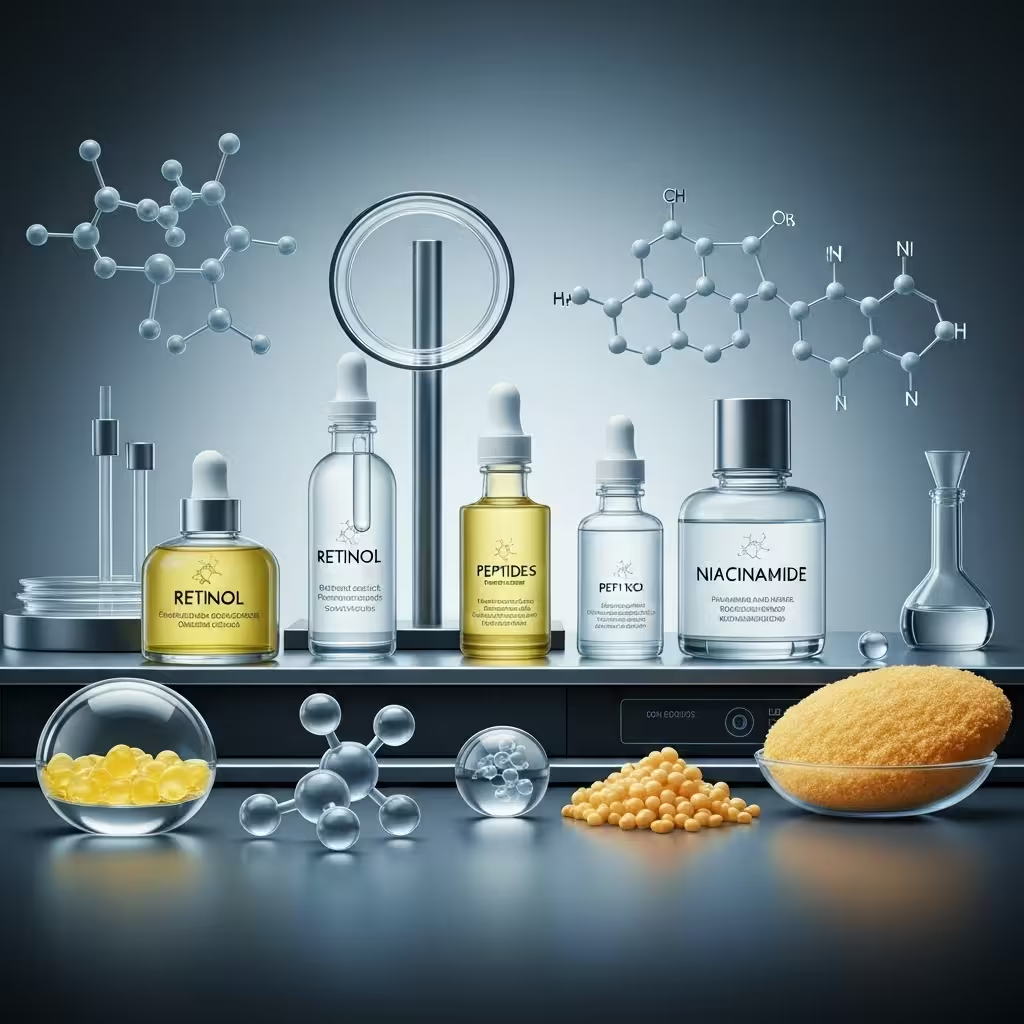
Anti-aging skincare has evolved tremendously with advances in dermatological science. Understanding how key ingredients work can help you make informed decisions about your skincare routine.
Retinoids, including retinol and prescription tretinoin, work by increasing cell turnover and stimulating collagen production. They're considered the gold standard for anti-aging, but they require gradual introduction to avoid irritation.
Vitamin C is a powerful antioxidant that protects against free radical damage while brightening skin and supporting collagen synthesis. L-ascorbic acid is the most potent form, though it can be unstable and irritating for some.
Peptides are short chains of amino acids that signal your skin to produce more collagen. They're generally well-tolerated and can be used alongside other active ingredients without causing irritation.
Hyaluronic acid is a humectant that can hold up to 1000 times its weight in water. It plumps the skin and reduces the appearance of fine lines by improving hydration at the cellular level.
Alpha hydroxy acids (AHAs) like glycolic and lactic acid work by dissolving the bonds between dead skin cells, revealing brighter, smoother skin underneath. They also stimulate collagen production over time.
The key to successful anti-aging skincare is consistency and patience. Most ingredients take 12-16 weeks to show significant results, so stick with your routine and protect your investment with daily sunscreen use.
Related Articles

10 Essential Skincare Tips for Glowing Skin
Discover the fundamental skincare practices that will transform your complexion and give you that coveted healthy glow.
Read More
Guide to Natural Beauty Products
Learn about the benefits of natural beauty products and how to choose the best organic ingredients for your skin type.
Read More
Perfect Evening Skincare Routine
Transform your nighttime routine with these expert-approved steps for maximum skin repair and rejuvenation while you sleep.
Read More